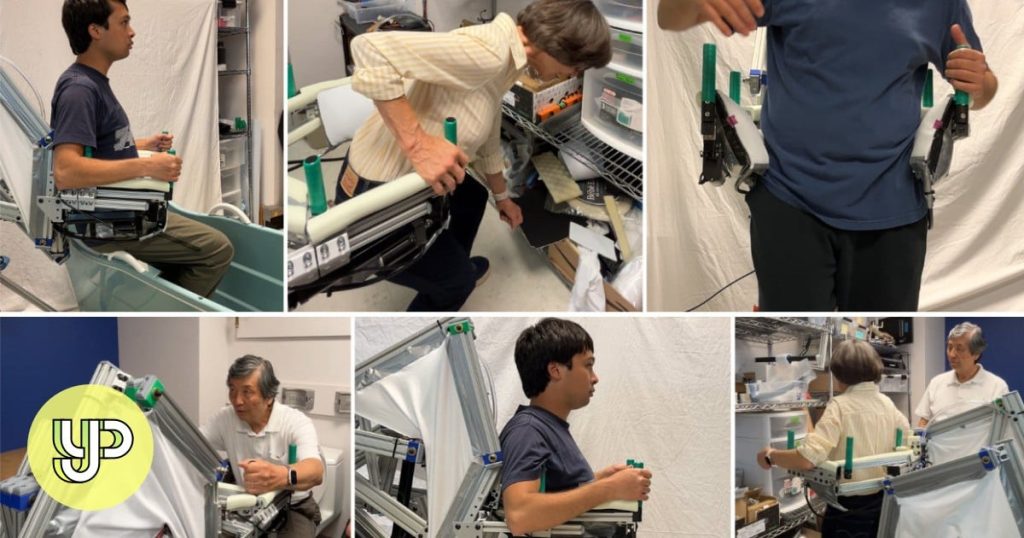[1] For some people, getting old means not being as light on your feet as before. For others, it means a greater risk of falls – which can be even more dangerous for those who live alone.
[2] With that in mind, engineers from the Massachusetts Institute of Technology (MIT) in the United States have made a robot to help elderly people living in their own homes. Using the robot could help people remain independent for longer before they need to pay for care or ask family members for help with standing and sitting.
[3] “All the demographic trends point to a shortage of caregivers, a surplus of elderly persons and a strong desire for elderly persons to age in place,” said MIT’s Roberto Bolli. The MIT team built what they called the E-Bar, or Elderly Bodily Assistance Robot. The university described it as “designed to physically support the elderly and prevent them from falling as they move around their homes”.
[4] “Many older adults underestimate the risk of falls and refuse to use physical aids, which are cumbersome, while others overestimate the risk and may not exercise, leading to declining mobility,” said Harry Asada of MIT.
[5] The MIT team said the invention has “robotic handlebars” that follow the user. It allows people to “walk independently or lean on the robot’s arms for support”. “The robot can support the person’s full weight, lifting them from sitting to standing, and vice versa, along a natural trajectory. And the arms of the robot can ‘catch’ them by rapidly inflating side airbags if they begin to fall,” the researchers continued.
[6] “Our design concept is to provide older adults with balance impairment with robotic handlebars for stabilising their bodies. The handlebars go anywhere and provide support anytime, whenever they need,” Asada said. The prototype is operated by remote control, but the team aims to create a smaller, more graceful update that is automated to detect a user’s movement and follow them around.
Source: dpa, May 28
Questions
1. Based on paragraph 1, who is potentially at a higher risk of falls when they get older?
2. What is the main purpose of the E-Bar robot developed by MIT, according to paragraph 2?
A. to keep elderly people company
B. to replace caregivers
C. to encourage elderly people to exercise
D. none of the above
3. What do the “demographic trends” in paragraph 3 refer to?
4. Find a word in paragraph 4 that means “large and heavy”.
5. How do the robot’s arms “catch” a user if they begin to fall, according to paragraph 5?
6. Complete the following summary with different forms of the word “robot”. (4 marks)
Engineers at MIT have created a (i) _____called E-Bar. This (ii) ______ device aims to enable older adults to stay independent in their homes by offering physical help and preventing tumbles. Its (iii) ______ handlebars can move with the user, support walking, and assist with sitting and standing. If a person begins to fall, the (iv) ______ can deploy airbags to catch them.
Could robots be used as carers for the elderly? Photo: Shutterstock
Answers
1. those who live alone
2. D
3. a shortage of caregivers, a surplus of elderly persons and a strong desire for elderly persons to age in place
4. cumbersome
5. by rapidly inflating the side airbags
6. (i) robot; (ii) robotic; (iii) robotic; (iv) robot

